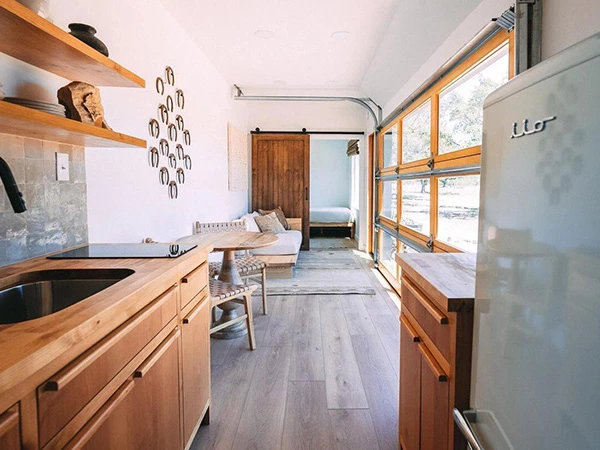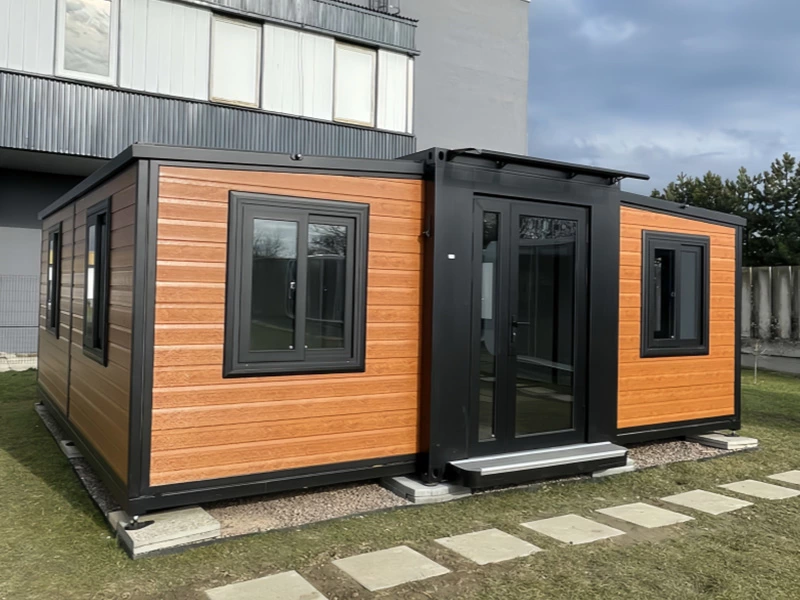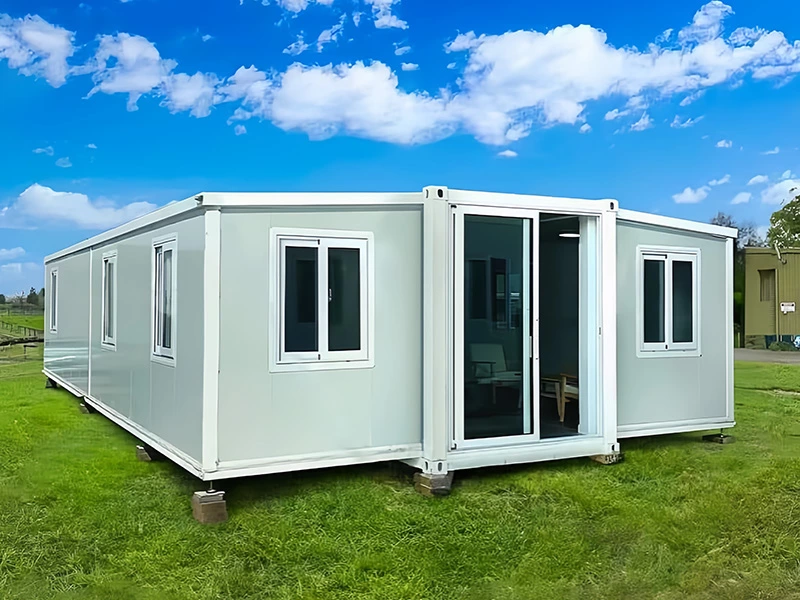Modular House Costs: Price Range and Money-Saving Tips
What is a modular home?
A modular home, to put it simply, is a playful take on the "steel box." It's not a cold, impersonal shipping container, but a flexible home that's prefabricated and quickly assembled upon arrival. Imagine it: one day it's your office, tomorrow it could be a cafe, and the day after that, a vacation cabin. Moving is no longer a major undertaking; it's a matter of "changing scenery with just a bag." It saves time and money, and has a cool, industrial feel, adding a touch of "cool nomadism" to your life.

Modular House Market Analysis
The modular house market has shown significant growth in recent years. Globally is estimated to be US$20 billion in 2024 and is projected to reach US$80 billion by 2033, with a compound annual growth rate of 10.6% from 2026 to 2033. In North America, Europe, Asia, and other regions, with its unique advantages, meets the diverse needs of different customer groups.
In North America, particularly the United States and Canada, the sparsely populated landscape and the demand for personalized homes have led to a booming modular housing market. Many families choose its as vacation homes or permanent residences because they can be quickly erected and customized to their preferences.
In Europe, due to its emphasis on environmental protection and sustainable construction, the eco-friendly characteristics of modular housing align closely with local development philosophies. Furthermore, Europe's mature industrialized construction system provides strong support for large-scale production and promotion.
In Asia, with accelerated urbanization and population growth, housing demand is rapidly increasing. Modular housing, with its fast construction speed and labor-saving features, has become an effective way to address housing shortages. Countries such as China, Japan, and South Korea are actively promoting the research and application of this housing technology.
Cost structure and price range of modular homes
Base Price
The manufacturer's base price for UVO modular homes varies depending on the size and basic configuration of the home, but generally ranges from $20,000 to $70,000. This price covers the main container structure, basic framing, and basic door and window installations, but does not include additional customization.
Customization Fees
Customization fees vary greatly depending on the client's individual needs, but generally range from $50,000 to $50,000. If the client needs to add bedrooms, the cost for one bedroom is approximately US$15.00 - US$20.00, for two bedrooms it is US$25.00 - US$3,000, for three bedrooms it is approximately US$3,000 - US$4,000, and so on. Interior customization options such as hardwood flooring, upgraded kitchen appliances, and additional room options cost $5,000 to $15,000. For a more advanced mobile home, using a higher-end trailer and a higher-quality double-story or even multi-story design can add $3,000 to $20,000. These customization options are largely dependent on the client's needs and UVO's quote.
Site-Related Costs
Land costs: Land values vary greatly depending on location. An acre of buildable land can cost as little as $1,000, or as much as $100,000 or more in economically developed or popular areas.
Site preparation costs: Site preparation costs vary depending on site conditions. For a relatively flat site, requiring minimal tree removal and land leveling, the cost is approximately $5,000-10,000. For a site with complex terrain requiring extensive earthwork and clearing obstacles, the cost can rise to $10,000-20,000.
Transportation, Taxes, and Permit Fees
Transportation and Taxes: Transportation costs cover the cost of transporting the container home modules to the construction site. These vary depending on the distance and number of modules, and generally range from $5,000 to $15,000. Related taxes are calculated based on local tax policies and are approximately 5% to 8% of the total home price.
Permit Fees: Permit fees vary significantly between municipalities and typically include building permits, mechanical permits, pre-plan review fees, and certificates of occupancy, totaling approximately $2,000 to $5,000. A list of required permits and their fees can be obtained from your local municipal office.
Installation and Amenities Costs
Installation Costs: After the main structure of the home is completed, the cost of finishing touches varies depending on the standard of finish. Basic renovations cost approximately $80 to $150 per square meter, mid-range renovations $150 to $250 per square meter, and high-end renovations cost over $250 per square meter. The total renovation cost generally ranges from $10,000 to $30,000.
Utilities: If the construction site is close to public utilities, connecting to town utilities will cost approximately $2,000-5,000. For a self-sufficient plan, installing a well and septic system will cost $15,000-25,000.
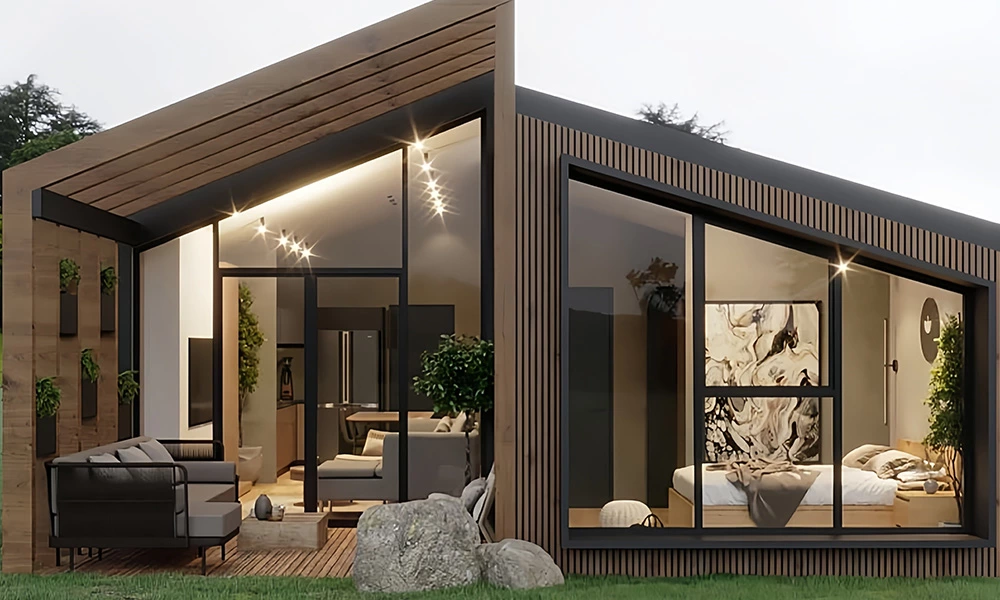
Overall Price Range
Taking all of the above into account, the actual price range for modular homes, as legal, turnkey residences, is as follows:
Low-mid-range: $1,200-1,800 per square meter, suitable for basic living needs, including basic customization, compliance, and simple renovations.
Mid-to-high-end finishes, compliance, and complete renovations: $1,800-2,500 per square meter, including greater customization options, high-quality finishes, and comprehensive amenities.
High-end residences, custom designs, and exceptional comfort: $2,500-$2,500 per square meter and above, suitable for high-end needs, including comprehensive customization, luxurious finishes, and high-quality amenities.
Modular House Price List (1-4 Bedrooms)
The price of modular houses is influenced by various factors, including the structure, materials, size, and level of finish. The following is an analysis prices for different room sizes, based on UVO's typical price ranges:
One-bedroom: These units cost approximately $200 more than the base price. These units are simpler in design, such as small houses with lightweight steel structures. These units are relatively small and suitable for single occupants or temporary residences.
Two-bedroom: These units cost approximately $360 more than the base price. These units require a factory-installed bedroom partition, offering moderate living space and are suitable for a family of three, offering a good value.
Three-bedroom: These units cost approximately $580 more than the base price. These units offer relatively spacious living space and may feature a sturdier steel frame with a more balanced layout and design.
Four-bedroom: These units cost approximately $700 more than the base price. These units are suitable for larger families. These units may have a more complex design and more sophisticated finishes, such as high-quality exterior materials and simpler interior finishes.
What are the main benefits of choosing modular housing?
Reduced Capital and Loan Costs
Shorter construction cycles not only save time but also reduce interest expenses. In traditional construction, homeowners typically pay loan interest for a construction period of up to a year; modular construction can shorten the cycle by half or more, alleviating financial pressure and allowing the budget to be used more efficiently for home quality.
Unaffected by Weather, Lower Construction Risks
Traditional construction is easily delayed by rainy seasons, typhoons, and other weather conditions. Modular housing's main structure is completed in a closed factory with a constant and controllable production environment, reducing schedule fluctuations and avoiding construction quality problems caused by humidity or high temperatures.
High Precision, Minimal Errors, More Efficient Installation
Each component of a modular house is manufactured using standardized processes and strict dimensional control. On-site installation only requires hoisting and assembly to complete the main structure, minimizing construction errors. This high-precision assembly also makes later maintenance easier.
Stronger Structure, Guaranteed Quality
Each module must undergo long-distance transportation and hoisting, resulting in a more robust and durable structural design than conventional housing. These modules undergo multiple quality tests before leaving the factory to ensure precise alignment at the installation site, resulting in a more stable and safer overall structure after assembly.
Shorter construction time, faster move-in
One of the biggest advantages of modular housing is its construction speed. Most of the house's structure can be pre-constructed in the factory, unaffected by weather; only the foundation and module assembly need to be completed on-site. This means you can get the keys to your new home in a shorter time, saving significant waiting time.
Key Factors Affecting Modular House Prices
Geographic Location
Geographic location has a significant impact on the price of modular homes. In economically developed areas, labor costs, land costs, and other resource costs are typically higher, which in turn drives up the overall price. For example, in central urban areas of Europe and the United States, land is scarce and expensive, and prices can be much higher than in remote areas. Conversely, in remote or less developed areas, prices can be lower due to these relatively lower costs.
Market Supply and Demand
Market supply and demand are key factors influencing the price of modular homes. When demand is high, supply shortages can lead to price increases. For example, in disaster-prone areas, post-disaster reconstruction requires a large number of these types of quickly-installable homes, which can cause prices to rise. Conversely, when supply is excessive, companies may lower prices to gain market share.
Home Decor Style
Different home styles dictate different home decor preferences. Some buyers choose to live in the property themselves and prefer a minimalist style, while investors may want to create a high-end atmosphere in the interior design and will be more willing to increase their budget.
Construction Material Price Fluctuations
Fluctuations in building material prices directly impact the cost of modular housing. The prices of key building materials for modular homes, such as reinforced concrete, insulation, and fireproofing, fluctuate frequently due to market supply and demand and raw material price volatility. For example, when iron ore prices rise, steel production costs increase, directly leading to higher material costs. Similarly, price fluctuations in insulation and fireproofing materials also affect the overall cost.
Production Scale and Standardization
Currently, there are significant differences in production scale and standardization within the modular housing industry. Some companies have not yet achieved large-scale production, resulting in lower procurement costs, production efficiency, and transportation efficiency, which in turn drives up costs. Conversely, companies with large-scale production and a high degree of standardization can reduce material costs, improve production efficiency, and optimize transportation solutions through bulk purchasing, thereby lowering their overall price.
Design and Construction Skills
Excellent design and construction teams can improve work efficiency and construction quality, thereby reducing costs. In terms of design, a well-designed house makes the most of materials, minimizes waste, and meets the client's functional and aesthetic needs. For example, by optimizing structural design, the amount of building materials used can be reduced while ensuring the house's safety. In terms of construction, experienced and highly skilled construction teams can accelerate the construction process, reduce errors and rework, and thus lower labor and time costs.
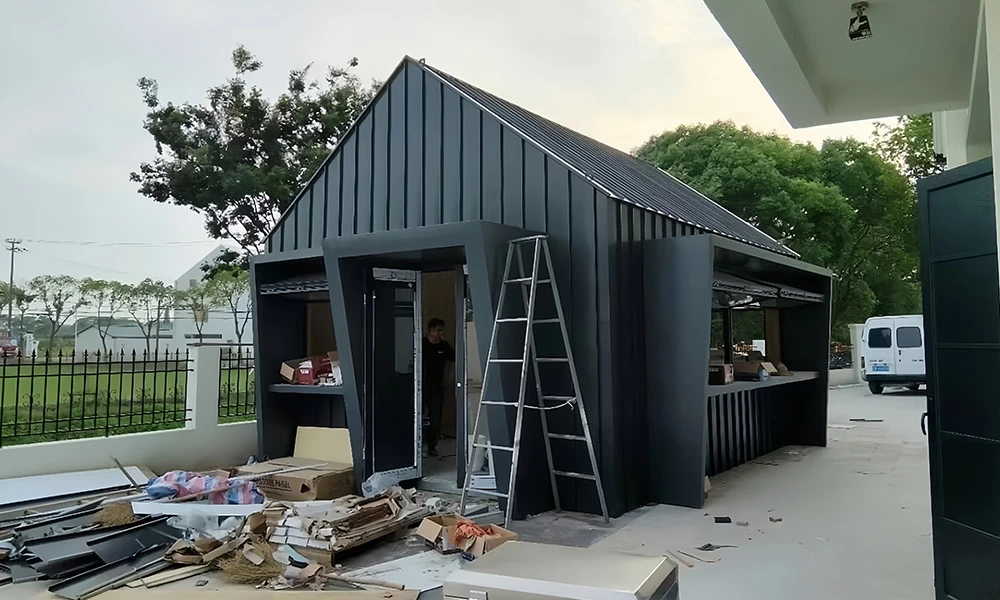
Six Tips for Saving Money When Buying a Modular House
Choose a Standardized Design
Don't always think "I want to be unique." Standard sizes and conventional designs are cheaper than fancy custom designs and save construction time.
Plan the Use Ahead of Time
Home, office, or cafe? Think clearly about the purpose. Having a clear purpose can help you avoid repeated renovations and save money.
Buy in bulk for better value
One home is a house; multiple homes are a community. Bulk purchases often offer discounts and save on shipping costs.
Buy Directly from a Reliable Manufacturer
Middlemen aren't always cost-saving. Working directly with UVO Factory offers more transparent pricing and less hassle with after-sales service.
Plan Infrastructure Planning
Don't underestimate the "invisible" aspects like plumbing, electricity, and foundations. Planning ahead can avoid later additions and rework, saving significant hidden costs.
Consider Expandable Combinations
Buy the basics first, then gradually add modules, like Lego, for flexibility without breaking the bank all at once.
